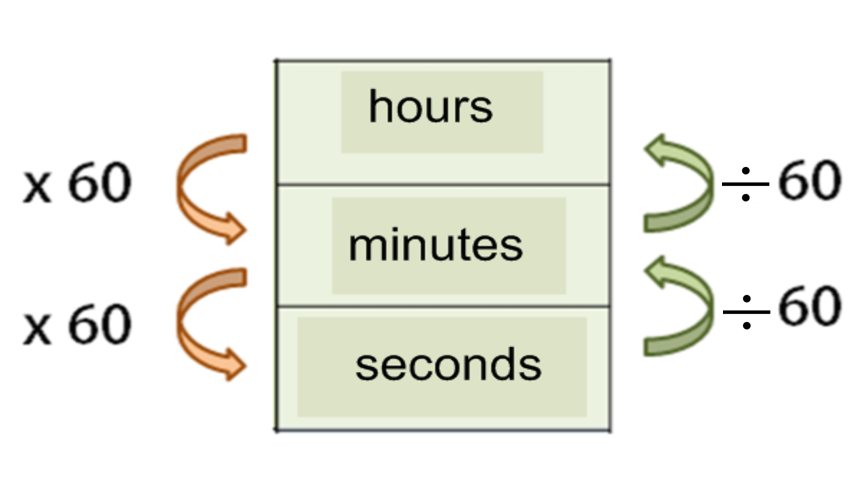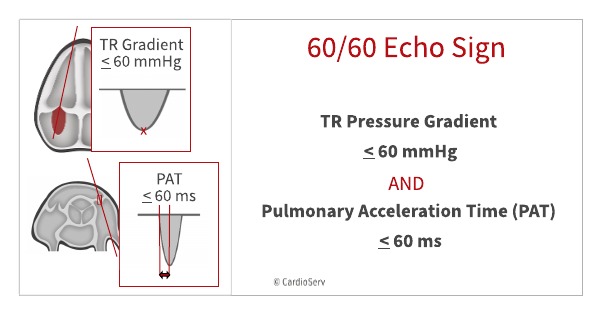We measure time in 60 because it is a convenient base for calculations and has historical roots in ancient civilizations that used a sexagesimal (base 60) number system. This allowed for easy division and multiplication, especially for measuring angles and time.
Additionally, the Babylonians and Sumerians, who were influential in the development of our modern timekeeping system, used a sexagesimal system for their calendar and astronomical calculations. Thus, the use of 60 minutes in an hour and 60 seconds in a minute became standardized over time.
Today, this measurement system continues to be used globally due to its practicality and historical significance.
Historical Perspective
The reason we measure time in 60 is rooted in historical perspective. Ancient Mesopotamians used a base-60 number system called sexagesimal, which influenced the division of time into 60 minutes and 60 seconds that we still use today. This system is believed to have originated from their use of a base-60 counting rod system.
Influence Of Ancient Civilizations On Time Measurement Systems
The measurement of time in the present era has been influenced by the practices and contributions of ancient civilizations. The concept of measuring time systematically can be traced back to the ancient Sumerians, who utilized a base-60 system for calculations, which had a significant impact on the division of time.
The Sumerians’ sexagesimal system, which is based on the number 60, was further developed and adopted by the Babylonians, thereby influencing subsequent civilizations. This numerical system not only shaped the method of time measurement but also played a pivotal role in mathematics and astronomy.
Influence Of Ancient Civilizations On Time Measurement Systems
Ancient civilizations, such as the Egyptians and the Greeks, incorporated the base-60 system into their timekeeping methods. The Egyptians developed sundials to track time during the daytime, while the Greeks introduced the clepsydra, a water clock, for measuring time.
The consistent use of the base-60 system in diverse ancient civilizations underscores its enduring influence, serving as a foundation for the development of modern time measurement systems.
Evolution Of Time Measurement
The concept of measuring time has evolved through history, reflecting the advancements in human civilization. Understanding the evolution of time measurement involves exploring the historical developments culminating in the modern-day usage of time measurement standards. From ancient civilizations to the present era, the evolution of time measurement has significantly influenced human activities.
From Babylonian Division To Modern-day Usage
Time measurement has originated from ancient civilizations, where early methods were based on celestial movements and natural periodic events. The Babylonians were among the first to divide the day into 24 hours, each hour consisting of 60 minutes and each minute further divided into 60 seconds. This base-60 system was adopted due to its mathematical divisibility, facilitating practical calculations and measurements.
Over time, the refinement of timekeeping devices, such as sundials and water clocks, paved the way for standardized time measurement. The development of accurate mechanical clocks and the establishment of time zones further solidified the modern standardization of time measurement.
Significance Of 60
Time is measured in 60 because of the historical significance and convenience of the base-60 system. This measurement originated from ancient Sumerians and was adopted by other civilizations, influencing our current timekeeping practices.
Origins And Reasons Behind The Sexagesimal System
Historically, the sexagesimal system, based on the number 60, has been widely used due to its divisors – 1, 2, 3, 4, 5, 6, 10, 12, 15, 20, 30, and 60. This made calculations easier in ancient societies.
The significance of 60 can be traced back to ancient Mesopotamia, where this number was chosen for its mathematical properties. It is a highly composite number, facilitating simple fractions and mathematical operations.

Credit: www.smartick.com
Atomic Clocks And Leap Seconds
Atomic Clocks are precise timekeepers based on the vibrations of atoms. Leap seconds are added to match solar time. Time is measured in 60 due to the Sumerians’ sexagesimal system, influencing today’s time divisions.
Maintaining Synchrony Between Atomic And Astronomical Time
The precise measurement of time is crucial to synchronize various activities in our daily lives, from scheduling appointments to coordinating global events. With the advent of atomic clocks, we have been able to achieve a level of accuracy that was once unimaginable. Atomic clocks measure time based on the oscillations of atoms, which are highly stable and predictable. However, these clocks operate independently of astronomical time, which is based on the rotation of the Earth. As a result, mechanisms have been put in place to maintain synchrony between atomic and astronomical time. One such mechanism is the introduction of leap seconds.Leap Seconds
Leap seconds are adjustments made to atomic time to ensure it stays in sync with the rotation of the Earth. Since the Earth’s rotation is gradually slowing down due to tidal forces, the length of a day is getting longer. To compensate for this, leap seconds are periodically added to atomic clocks to align them with the Earth’s rotation. These extra seconds are, in a sense, “inserted” into atomic time to keep it in harmony with astronomical time. This adjustment helps to avoid any significant discrepancies that may occur between timekeeping systems.The Impact Of Leap Seconds
The introduction of leap seconds may seem like a minor adjustment, but it has a significant impact on our daily lives. These additional seconds require careful consideration, especially in the realm of technology and computer systems that rely on precise time measurements. Without proper handling of leap seconds, various time-dependent processes, such as financial transactions and data synchronization, could encounter errors or disruptions. To avoid these issues, organizations responsible for timekeeping, such as the International Earth Rotation and Reference Systems Service (IERS), closely monitor the Earth’s rotation and determine when to introduce leap seconds. These adjustments are typically made on June 30th or December 31st, depending on the need for synchronization.Conclusion
In conclusion, the introduction of leap seconds ensures the maintenance of synchrony between atomic time and astronomical time. By periodically adding these seconds, atomic clocks align with the Earth’s rotation, preventing any significant discrepancies. This adjustment is vital for various time-consuming processes and serves as a reminder of how our timekeeping systems have evolved and adapted to the ever-changing nature of our planet.Time Measurement In Programming Languages
Time measurement in programming enables developers to accurately track the execution time of code, monitor performance, and implement time-sensitive operations. Two commonly used programming languages for time measurement are Python and Java.
Utilizing Time Modules In Python
In Python, developers can utilize the built-in time module to measure elapsed time and perform time-related operations. By leveraging functions such as time.time() or time.sleep(), precise time tracking and synchronization can be achieved within Python scripts.
Utilizing Time Modules In Java
Similarly, in Java, accurate time measurement is crucial for various applications. When measuring elapsed time in Java, it is recommended to use System.nanoTime() over System.currentTimeMillis() for precise results. System.nanoTime() disregards small clock corrections, making it ideal for measuring elapsed time.
Challenges In Time Measurement
Time measurement is crucial in various aspects of our lives, from coordinating daily tasks to ensuring accuracy in scientific experiments. However, achieving precise time measurements poses several challenges, especially in the digital realm.
Accuracy Issues With System.nanotime() Vs System.currenttimemillis()
When it comes to measuring time in software development, accuracy is paramount. The utilization of System.nanoTime() and System.currentTimeMillis() functions in Java introduces complexities in achieving precise time measurements.
While System.nanoTime() provides nanosecond-level precision and is immune to small clock corrections and drifts, System.currentTimeMillis() relies on the system clock, making it susceptible to inaccuracies due to clock adjustments.
Developers aiming for high-precision time measurements in their applications must carefully consider the trade-offs associated with these timing mechanisms. Choosing the appropriate method is essential to ensure accurate time tracking in software systems.
Implications Of Time Measurement
Have you ever wondered why we measure time in 60? The way we measure time has significant implications, impacting various aspects of our daily lives and scientific research.
Effect On Daily Life
The conventional division of time into units of 60, such as seconds, minutes, and hours, has shaped our daily activities and routines. The use of this base-60 system has led to the widespread integration of 60-minute hours and 60-second minutes into our schedules, device interfaces, and everyday interactions. This time measurement method has become deeply rooted in our societal practices and adheres to a fundamental aspect of our lifestyle.
Scientific Research
In the realm of scientific research, the utilization of the base-60 system for time measurement has implications as well. Various fields of study, including astronomy, physics, and geology, rely on precise time measurements for data analysis and experimentation. The consistent and standardized nature of the 60-based time system facilitates uniformity in research findings and enables accurate comparisons across different studies and disciplines.

Credit: www.cardioserv.net

Credit: www.amazon.com
Frequently Asked Questions On Why Do We Measure Time In 60?
Why Base 60 Is Used For Minutes And Hours?
Base 60 is used for minutes and hours because it allows for easy divisions, as 60 is divisible by many numbers. This makes calculations and timekeeping simpler and more accurate.
Why Is Time Always On 60?
Time is based on a sexagesimal system with 60 seconds, minutes, and hours, possibly due to its divisibility.
Why Is Time Done In 60s?
Time is done in 60s because of the sexagesimal system used by ancient Babylonians. This system was based on multiples of 60, which they believed had mathematical advantages. Over time, this system was adopted by different civilizations and continues to be used today.
Why Is 60 The Base Of Time?
Time is based on 60 due to the ancient Mesopotamians’ use of a sexagesimal (base-60) system for calculations.
Conclusion
Indeed, the concept of measuring time in 60 has a rich history and serves a practical purpose. From ancient civilizations to modern technology, this numerical system has stood the test of time. Understanding its origins can provide valuable insights into how we perceive and organize our world.
